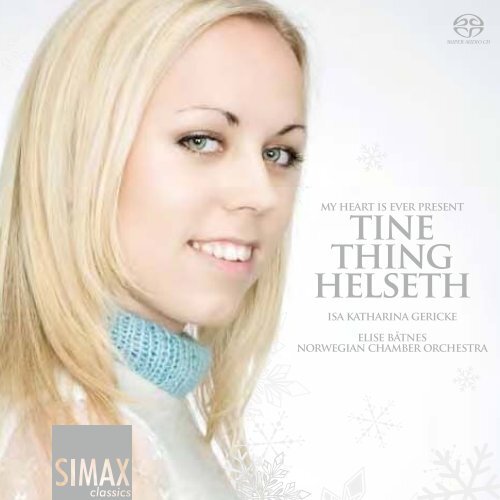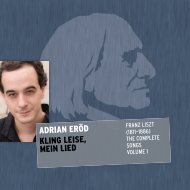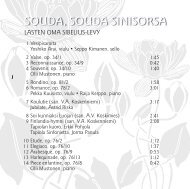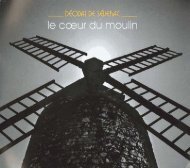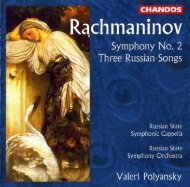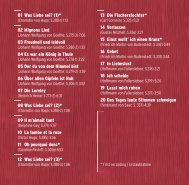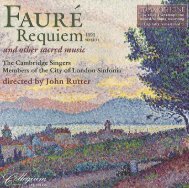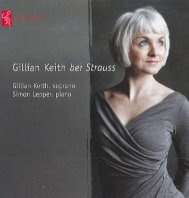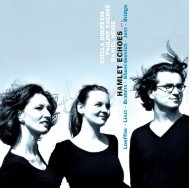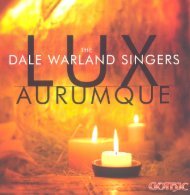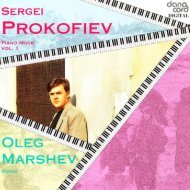tiNE thiNG hElSEth - Naxos Music Library
tiNE thiNG hElSEth - Naxos Music Library
tiNE thiNG hElSEth - Naxos Music Library
- No tags were found...
Create successful ePaper yourself
Turn your PDF publications into a flip-book with our unique Google optimized e-Paper software.
my heart is ever presenttinethinghelsethisa katharina gerickeelise båtnesnorwegian chamber orchestra
1 In the bleak midwinter 02:49gustav holst · arr. gaute storaas2 Et lite barn så lystelig / A tiny child so full of joy 02:07trad. · arr. gaute storaas3 Mitt hjerte alltid vanker / My heart is ever present 04:14trad. · arr. gaute storaas4 Maria Wiegenlied 02:12max reger · arr. gaute storaas5 Angels from the realms of glory 02:37henry thomas smart · arr. gaute storaas6 Ode for the birthday of Queen Anne “Eternal source of light divine” 02:53georg friedrich händel7 Sinfonia in D, g. 8 04:54giuseppe torelli8 Ave Maria 02:57bach/gounod · arr. gaute storaas9 Engledans / Angels dance 02:50tine thing helseth · arr. gaute storaas / jarle storløkken10 Kirken den er et gammelt hus / Buildt on the Rock the church doth stand 03:13trad. · arr. gaute storaas11 “Let the bright seraphim” from Samson 05:30georg friedrich händel12 Hymn 03:28nils larsen · arr. gaute storaas13 Ingen vinner frem til den evige ro / None shall win eternal peace 02:03trad.14 Eg veit i himmelrik ei borg / I know a stronghold in heaven 03:44trad. · arr. gaute storaas15 O holy night 04:14adolphe adam · arr. gaute storaas16 In dulci jubilo 02:28johannes klotz · arr. gaute storaas17 Deilig er jorden / How wonderful is the earth 03:23trad. breslau · arr. gaute storaas02
my heart isever presenttine thing helseth, trumpetisa katharina gericke, sopranoelise båtnes, leader and violin solo · norwegian chamber orchestrabirgitte volan håvik, harp · christian kjos, organ and harpsichord03
There Det is er something noe helt very spesielt special med about musikk music som that snakker speaks til deg. directlyto Musikk you. <strong>Music</strong> som griper, that grips rører you, ved moves deg, som you, gir gives deg you styrke strength og håp. andhope. <strong>Music</strong> Musikk that som makes får you deg laugh til å le and og smile for to yourself. deg selv. <strong>Music</strong>that Musikk helps you som forget får the deg unimportant til å glemme things det uviktige, but recall som life's får deg smallpleasures, til å the huske ones de you små cannot gleder, live de without. du ikke kan <strong>Music</strong> leve that uten. enablesyou Musikk to see the som whole får picture, deg til å while se hele at bildet, the same samtidig time reminding som denminner you to live deg here om å and leve now. her og For nå. me, For Christmas meg har has julen always alltid been værtfull of av music slik musikk, like this, og and jeg I har have spilt been og sunget playing denne and singing musikken it for såas lenge long jeg as kan I can huske. remember. Da jeg When var liten I was var young, musikken music den was største thebest julepresangen Christmas jeg present kunne of få, all ingen - none av of pakkene the presents under under juletreet the gav treemeg gave den me samme such a følelsen feeling of av security trygghet and og glede. joy.05
1In the bleak midwinterIf you try to find this much-loved Christmascarol in Gustav Holst’s own list of hiscompositions, you will look in vain. Shortlyafter the turn of the previous century Holst’scomposer friend Ralph Vaughan Williamswas engaged to edit the musical material forthe English Hymnal, and asked his friendGustav Holst to contribute. Holst producedthree hymns, of which In the bleak midwinteris the first (no. 25 in the English Hymnal). Itwas subsequently published in a collection ofsix Christmas carols by Oxford UniversityPress and thus began its journey to becomingone of the most-loved carols of all times. Thebeautiful poem which inspired Gustav Holstwas written by Christina Rosetti, sister of thegreat Raphaelite Dante Gabriel Rosetti andone of the noblest woman poets of theVictorian age.2Et lite barn, så lysteligThis tune, which is usually associated withGrundtvig’s words, has deep roots in Nordicsoil. It was given Nordic words as early asduring the renaissance; the tune has thecharacter of a Norwegian folk melody.3Mitt hjerte alltid vankerWe take the most established hymns in thehymn-book for granted – words and melodyare part and parcel of the same entity. Often,however, they are the result of a fusing of verydifferent ages and spiritual climates – as is thecase with the wonderful ‘hand in glove’ tuneto Brorson’s hymn “Mitt hjerte alltid vanker”.The words were written during Brorson’speriod as pastor in southern Jutland in the1730s. The link-up with the present tune didnot, however, happen until 80-90 years laterafter Norway had parted with Denmark andentered into a union with Sweden. The editorsof the hymn-book gave the tune’s origins asbeing in Vestergotland, but the form in whichit exists with Brorson’s words is an adapted,Norwegian folk song version. Apart from itsdeeply pious mood, it is probably safest to saythat we know nothing for certain of the tune’sorigins; the index in the hymn-book gives theorigin as ‘unknown’ – which does not at alldetract from its qualities.4Maria WiegenliedMary’s song at the crib is the beloved subjectof a German folk song that has been set tomusic by both Brahms and Max Reger.Reger’s usual megalomania is totally absenthere, in what is perhaps his finest single Lied.5Angels from the realms of gloryAlmost a Christmas national anthem incertain parts of the English-speaking world,this carol is a product of Victorian England.The disparagement of this era in retrospect is06
quite remarkable. Henry Smart, born into anEnglish composer and organ dynasty, wasconsidered in his day (1860-70) “second onlyto Bach as a composer of organ music”(Spark). Today only two of his hymns are inregular use, but the one presented here hasbecome something of a Christmas hit!6Ode for the birthdayof Queen Anne–“Eternal source of light divine”Handel never became fully at home with theEnglish language, but his relationship withthe last Stuart on the throne of England,Queen Anne (daughter of James II), was ofthe very best. There is disagreement as towhether it was on the occasion of the queen’slast birthday on 5 February 1714 or the yearbefore that the newly-immigrated Handelwrote his tribute to the queen. The openingaddresses the birthday girl directly: “EternalSource of Light Divine.”7Sinfonia in DGiuseppe Torelli has perhaps beenovershadowed by his predecessor Corelli andnot least by his successor Vivaldi, but he hadwithout any doubt a greater role than either ofthe other two in developing trumpettechnique and integrating trumpet withstrings. The basis for his reputation in Europeis five collections of “Sonatas, Sinfonias andConcerti”. His interest in and contribution tothe trumpet’s place in the musical texture isdue to one person, namely GiovanniPellegrini Brandi. Torelli proved himself to bea true experimenter with an open mind whenit came to new textures.8Ave Maria<strong>Music</strong> history offers many settings of theangel Gabriel's greeting to Mary: Ave Maria.An 'alloy' comprising elements from differentcenturies became one of the best known andmost loved versions, namely Gounod'smelody borrowing the first prelude fromBach's “Das wohltemperierte Klavier” as aperfect accompaniment. Those broken chords,flowing freely in a steady rhythm, were awell-crafted foundation for the melodic skillsof the romantic composer Charles Gounod.9EngledansThe nature and actions of angels has receivedrenewed focus in recent times. Inspirationcomes from above, in a double sense: theangels dance incessantly. In a pleasant waltzthey hover weightless above the earth in TineThing Helseth’s performance. A contrastingsection, which does not depart from theirheavenly dignity – in favour of earthly skills –is successfully brought off. We can butconfirm that this virtuoso trumpeter also07
handles the mournful side of her instrumentand her personality with the greatest skill. Wecan lean back and look forward to the results,including Helseth’s compositional skill withpleasure and anticipation.10Kirken den er et gammelt husDuring the 1840s Ludvig Mathias Lindemancomposed his distinctive melodic tribute to theChurch. Grundtvig’s wonderful hymn wasaptly suited to Lindeman’s tune. The essence ofthe hymn is not an extolment of the Church asa building, but the church that is us – you andI – a church built of “living stones” (verse 3).None other in the realm of Norwegian musiccould have been more suited to giving thegenius of Grundtvig the monumentality itdeserves than L. M. Lindeman.11Let the bright seraphimHandel’s famous concert tour to Dublin,where he brought along singers and musiciansand staged the world premiere of the“Messiah”, took place in 1742. When hereturned triumphant from Ireland he had anew Oratorio completed. “Samson” wasperformed to great acclaim in the presence ofmembers of the royal family at CoventGarden. Only one aria was composed afterHandel returned from Dublin, and it mightbe supposed that this single contributionlifted the entire performance.12HymneNils Larsen was the leading piano teacher ofthe years between the two wars. At his privatepiano school he taught virtually all ofNorway’s talented musicians of the time –including composers such as Ludvig IrgensJensen and Klaus Egge. Despite havingproduced a fair number of works, all thatremains today from Nils Larsen the composeris a single brief, yet inspired piece. It issufficient to secure for posterity Norway’smost prominent piano teacher throughoutthree decades a reputation as a composer.13Ingen vinner frem til den evige roIf one looks up hymn number 108 in theNorwegian hymnal, he or she will be presentedwith not only a 210 ten-year-old text by theeighteenth century Swedish hymnodist LeoLinderot, but also with the music to one of thefinest examples of a sacred Norwegian folksong. Throughout this tender, mournful tunefrom Hallingdal runs a feeling of deep fervour.The structure of the tune is very simple: Thefirst four bars are repeated and followed by twobars which are also repeated, then returning tothe opening four bars, without repetition. Thisis all it takes to bare the untainted depths ofthe soul of the Norwegian people.08
14Eg veit i himmerik ei borgSome might choose to nominate thisbeautiful folk melody from Hallingdal as theultimate Norwegian sacred folk song, for itsounds undoubtedly like a tune we could callour own. However, as with so many aspects ofculture, the origins of the words can be tracedto Germany and the century of theReformation. The structure of the dialogue inthe hymn between the Christian people andChrist is also to be found in the originalGerman folk song.15O holy nightToday Adolphe Adam is remembered outsideFrance for just one song, known in theScandinavian countries by the first line in theSwedish translation; “O Helga Natt”. This isfirst and foremost due to the incomparablevoice of Jussi Björling. There are few who areaware of the composer’s name at all, butAdam in fact wrote a number of songs, choralworks and sacred music in addition to thestage works which enjoyed enormouspopularity in his day. Today it is perhaps themusic to the ballet “Giselle” which is mostfamiliar. Adam simply called “O Holy Night”“Christmas Song” (Cantique de Noël).16In dulci jubiloBach treated this Latin extolment ofChristmas as a four-part chorale. All in allBach wrote more of these chorales than, forexample, cantatas. Bach did not present thechorales as a collection, that task befell thenext generation (Carl Philip Emanuel Bachand Johan Philip Kirnberger). The origins ofIn Dulci Jubilo predate Bach’s transcriptionby almost a quarter of a millennium, in thework of a composer in Germany at the timeof the Reformation, Johannes Kloz.17Deilig er jordenThis hymn belongs to a select group of tuneswhich evoke in any gathering a powerfulsense of togetherness. Many might think thatthis hymn, with its noble melody, has itsorigins in the Middle Ages – but they wouldbe wrong. Both the words and the tune werecomposed during the Romantic Movement.Belasslassrnhard(!) Severin Ingemann, arenowned Danish author and Holberg’ssuccessor at the Sorø Academy, wrote hiswords to a German tune of unknown origin.We do know, however, that the tuneoriginated in Breslau (now Wroclaw inPoland) during the golden decade ofRomanticism, the 1840s.09
Tine Thing Helseth, born 1987, started to play trumpet at the age of 7 and is today oneof the leading soloists of her generation. Helseth has appeared as a soloist with various orchestrasincluding Wiener Symphoniker, Vienna Chamber Orchestra, Zürcher Kammerorchester,Staatsphilharmonie Rheinland Pfalz, Cappella Cracowiensis, Shanghai Symphony Orchestra,Camerata Nordica, Nordwestdeutsche Philharmonie, and all the major Norwegian symphonyorchestras. She currently studies in Oslo with Arnulf Naur Nilsen.Tine Thing Helseth’s debut album with trumpet concertos by Haydn, Hummel, Neruda andAlbinoni was released in November 2007 (PSC1292) and has received excellent reviews.Helseth was awarded ”Newcomer of the Year in every genre” at the Norwegian GrammyAward 2007 (Spellemann), the first classical performer ever to be nominated. In 2006 she wasawarded 2nd prize in “Eurovision Young <strong>Music</strong>ians Competition” in Vienna. The same yearshe received the prestigious “Prince Eugen´s Culture Prize” in Stockholm awarded by Crownprincess Victoria of Sweden, the “Norwegian Soloists Prize”, “The Norwegian Broadcasting(P2) soloist”. In 2005 she was appointed ”<strong>Music</strong>ian of the Year” in Norway. She is also a 2009Borletti-Buitoni Trust Fellowship winner.Her festival appearances includes Schleswig-Holstein <strong>Music</strong> Festival, FestspieleMecklenburg-Vorpommern, Usedom musikfestival, Bergen International Festival, RisørFestival of Chambermusic and Kissinger Summer Festival, were she in 2007 was awarded ”theLuitpold Prize” as the most outstanding and interesting young artist of the year.Tine Thing Helseth is an active advocate for classical music among the younger generations,and was recently made “Born to Play” ambassador for The Norwegian Band Federation.Helseth is also artistic leader of the all female ten-piece ensemble tenThing Brassensemble.www.tinethinghelseth.com11
Isa Katharina Gericke studied at the Norwegian Academy of <strong>Music</strong> and theHochschule der Künste, Berlin. She was awarded first prize in the national round of the QueenSonja International <strong>Music</strong> Competition in Oslo/Trondheim 2001. The following year shereceived the 'Newcomer of the Year' award at the Kissinger Sommer festival in Germany. Inthe autumn of 2003 Isa made her début at the Norwegian National Opera as Gretel inHumperdinck's Hänsel und Gretel, and in 2008 she sang the role of Euridice in Monteverdi'sL'Orfeo during the opening season of the new opera house in Oslo.Isa Katharina Gericke has performed as a soloist with the Oslo Philharmonic Orchestra, theBBC Symphony Orchestra, The Czech Philharmonic Orchestra, the Akademie für alte MusikBerlin, and Stavanger Symphony Orchestra among others. She has collaborated withconductors including Sir Andrew Davies, Manfred Honeck, Franz Brüggen, RinaldoAlessandrini and Philipe Herreweghe. Isa has specialized in romantic Lieder and has appearedat numerous festivals in Norway and abroad. In the autumn of 2008 she made her Londondébut with a recital at Wigmore Hall.Isa Katharina Gericke released the critically acclaimed CDs 'Waldabendlust' (PSC1231) and‘Til Eva’ (PSC1238) for Simax. She is also singing the role of Solveig in a 2008 recording ofGrieg's Peer Gynt for <strong>Naxos</strong>. Isa is one of founders of Oslo BarokkOpera, and since 2001 shehas been artistic director of the annual Glogerfestspillene festival at Kongsberg.www.isagericke.comElise Båtnes (b 1971 in Trondheim) started playing the violin at the age of four. She hasstudied with Dorothy DeLay in USA, Ruggiero Ricci in Salzburg, David Takeino in Londonand Arve Tellefsen in Oslo.Båtnes performs as soloist with all Norwegian symphony orchestras in concertos includingAlban Berg, Sibelius, Tchaikovsky, Beethoven, Mendelssohn, Bernstein, Mozart and Bruch.Soloist activities abroad include playing with orchestras in Scandinavia and Germany, Belgiumand France. Furthermore she has made numerous recital concerts and TV/Radio performancesin Europe and USA.Since 2007 Elise Båtnes is 1st concertmaster of the Oslo Philharmonic Orchestra, a position12
she has also held with the Denmark Radios Symphony Orchestra, WDR SinfonieorchesterCologne and Trondheim Symphony Orchestra.The Norwegian Chamber Orchestra was founded in 1977 under the leadership ofTerje Tønnesen, who still works as the orchestra’s <strong>Music</strong> Director. For many years he worked inparallel with Iona Brown, who was <strong>Music</strong> and Artistic Director until 2001. From season 09/10Isabelle van Keulen will share the position as <strong>Music</strong> Director with Tønnesen and with Leif OveAndsnes as Principal Guest Director.The NCO is made up of the very best musicians in Norway who come together for specificprojects. The vision we have given ourselves is to be specialists in the entire range of classical musicrepertoire, from early music to contemporary, from serious church music to light music. Our goal is todo everything with the highest possible musical standard. At the same time we strive to presentour music and concerts in new ways and challenge our audience with new ideas and concepts.The orchestra regularly records and has a large number of recordings on labels like EMI, Virgin,Chandos, BIS and Simax. The NCO’s very first recording quickly established the orchestra’sinternational reputation: the Gramophone critic simply wrote “No record has given me morepleasure and few as much”. EMI’s recording of three Haydn Concertos with Leif Ove Andsnesreceived the Gramophone Concerto Award for 2000. This was followed up by two recordings ofMozart Piano Concertos (Nos. 9 & 18 and Nos.17 & 20). Both received fantastic reviews in theBritish magazine Gramophone, and in the New York Times, and were also nominated for theprestigious Grammy award for 2005 and 2008. For the first time, Andsnes and the NCO are alsoavailable on DVD (EMI) with music by Mozart and Bach.The orchestra tours regularly and have several times visited Halls and Festivals like the Proms andCarnegie Hall, and toured with artists like Mstislav Rostropovich, Joshua Bell, Radu Lupu, JoannaMacGregor and Leif Ove Andsnes. Concert appearances include visits to USA, Canada, UK,Central Europe and Asia.NCO regularly gives a series of subscription concerts in Oslo and frequently performs in othercities in Norway and Scandinavia. Since 1995 the orchestra has presented their own ‘Oslo WinterNights’ festival every second year.13
Helseth relishes Haydn’s epoch-makingexcursions into chromaticism with alacrity,especially in the slow movement which sheshapes with disarming naturalness.A splendid début disc. More please![International Record Review]The dialogue between orchestra and soloist isfirst rate. But most convincing is the virtuosicand elegant expression of Helseth.[Dagsavisen]JOSEPH HAYDN: Trumpet Concerto in E flat ·TOMASO ALBINONI: Concerto in B flat ·JOHANN BAPTIST GEORG NERUDA: TrumpetConcerto in E flat · JOHANN NEPOMUKHUMMEL: Trumpet Concerto in E flatPSC1292The four classics of the repertoire on her debutCD suit her nimble technique and light tone,and she is ably partnered by the pin-pointprecision of the Norwegian players who offerfar more than a mere backdrop.[5 stars Classic FM Magazine]At this rate, Tine is destined to follow in thepath of ther fellow countrymen, Truls Mørkand Leif Ove Andsnes.[Inside Track Classic FM]…plays with an especially beguiling, sweet andshimmering line, nonchalant technical authorityand stylish understatement.[The Gramophone]14
Recorded 10-13 June 2009 in Jar church, NorwayProducer and Editor: Jørn PedersenBalance engineer: Arne AkselbergLiner notes: August AlbertsenTranslation: Andrew SmithPhoto: ObservatorietClothing: Tulip og Tatamo Trikotasje ASCover design: Martin KvammeExecutive producer: Erik Gard AmundsenReleased with support from Statoil©&π2009 Grappa Musikkforlag ASAll trademarks and logos are protected. All rights of theproducer and of the owner of the work reproduced reserved.Unauthorized copying, hiring, lending, public performanceand broadcasting of this record prohibited.ISRC: NOFZS0976010-170PSC1276Statoil supports the heroes of tomorrow!Innovation is dependent on new talent, whether it involves playing the trumpet ordeveloping new energy. In our everyday lives, we see how innovative and talented colleaguesand solutions are helping to meet the world's energy needs in an environmentally friendlyway. As the proud sponsor of Tine Thing Helseth, we would like to express our thanks formany great musical experiences. We are looking forward to creating positive synergiestogether in future.15
PSC1276


